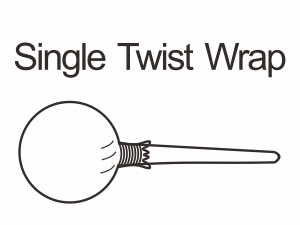Bananas, just like their greatest companion, peanut butter , are a big part of my life. As such, I’ve come to learn a whole lot about them. They’re climacteric , which means they keep ripening after they’re harvested. They’re both edible and useful at virtually all stages of the ripening process, from green to dark brown. Their starchy strings are nothing to freak out about . But there’s one thing about bananas I never learned until now: the purpose of that little bit of plastic wrap around the stems when you buy a bunch from the grocery store.
I had assumed that this little bit of cling wrap was intended to keep the produce held together so that economical shoppers don’t try to rip individual bananas from the bunch. (By the way, grocery stores offering individual bananas for purchase are staffed by geniuses.) But no, that’s what adhesive belly bands are for—the ones that wrap around the body of the bunch . It turns out that the wrapping on the stem helps keep the bananas fresher for longer by slowing down the ripening process. Which means I should probably stop immediately removing and discarding it as soon as I arrive home. Toffee

Bananas ripen, as all climacteric fruits do, thanks to the ethylene gas emitted by the fruit as it ages. The gas is released primarily from the stem (or “crown”) of the bunch where it was severed from the banana plant. As the gas travels outward from the stem, it can settle around the exterior of the bananas, causing them to turn yellow, brown, and eventually black. This is doubly true when the bananas are slumped in a heavy bunch on the countertop; banana hangers aim to slow ripening by letting plenty of air circulate around each piece of fruit.
When a small piece of plastic is wrapped around the crown, the ethylene gas is trapped and doesn’t have as much of a chance to swirl around your fruit; this slows down the ripening process and keeps the banana frozen in time for a bit longer. The gas cannot be kept at bay forever, but the plastic is an easy intervention if you’re picky about having a pristine yellow peel.
Not all producers wrap the crowns in plastic when selling bunches at the grocery store, but as Chiquita points out , you can always take a bit of plastic wrap and try out this technique for yourself once you bring your bananas home. You don’t need more than a few square inches of wrapping, and it should help you get a few extra days out of your fruit—as will keeping the bananas away from cold and hot temps inside your kitchen and making sure they aren’t being squashed by anything else on the countertop.
Conversely, when you want to accelerate the ripening of your bananas, there are ways to hasten the buildup of that ethylene gas around the fruit. Start by removing the plastic on the crown, and then place the bananas either inside a paper bag or beside other ripe fruits that emit ethylene gas, such as avocados.

Candy Wrapping Machine For Sale An informal poll of my friends and coworkers confirms, to my relief, that I wasn’t the last person on earth to learn what the plastic on the banana bunch is for. Then again, maybe I would have learned this a lot sooner if I cared about keeping my bananas perfectly yellow. But I don’t. Green, yellow, brown—nearly all of them look like breakfast to me.